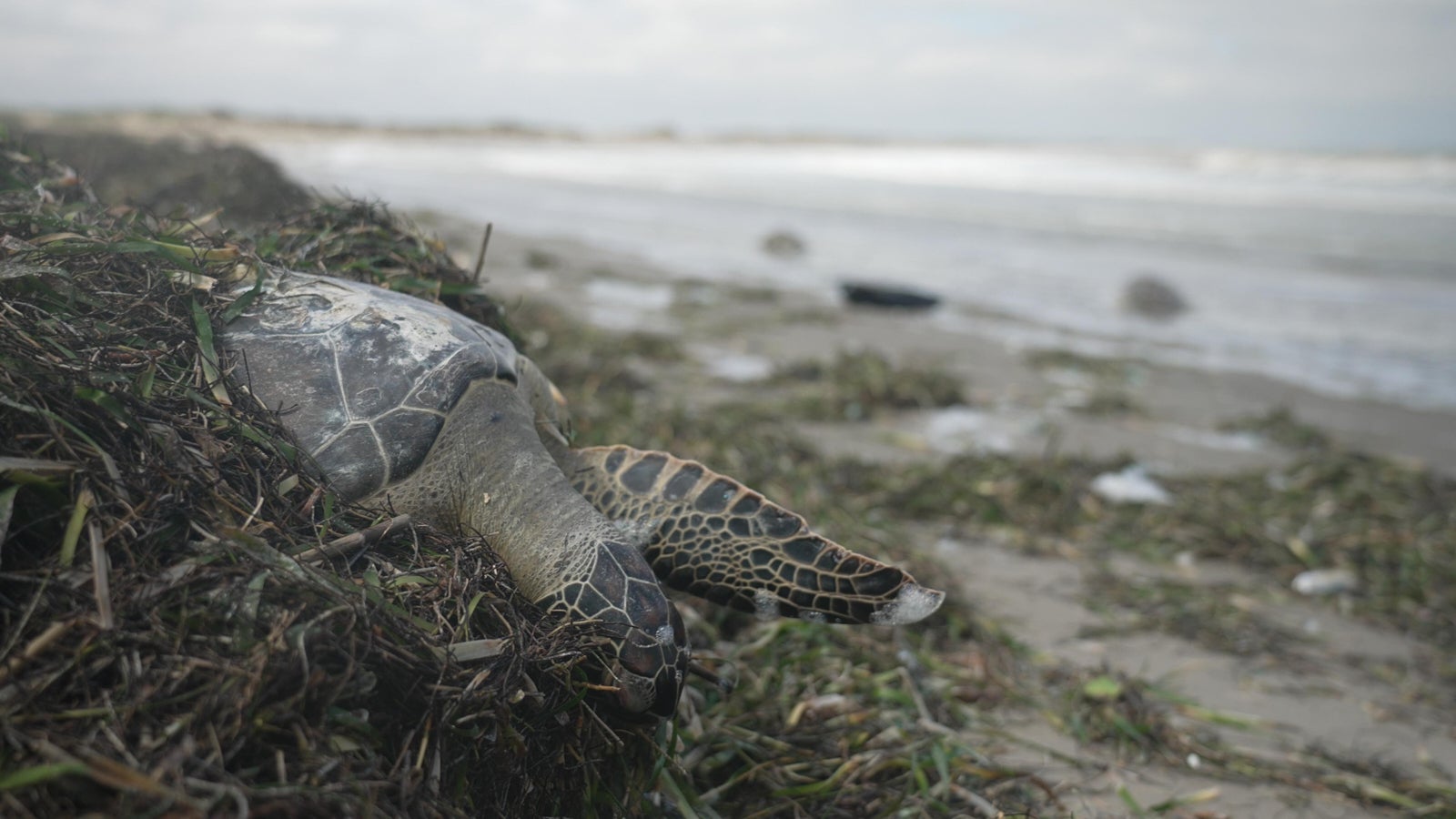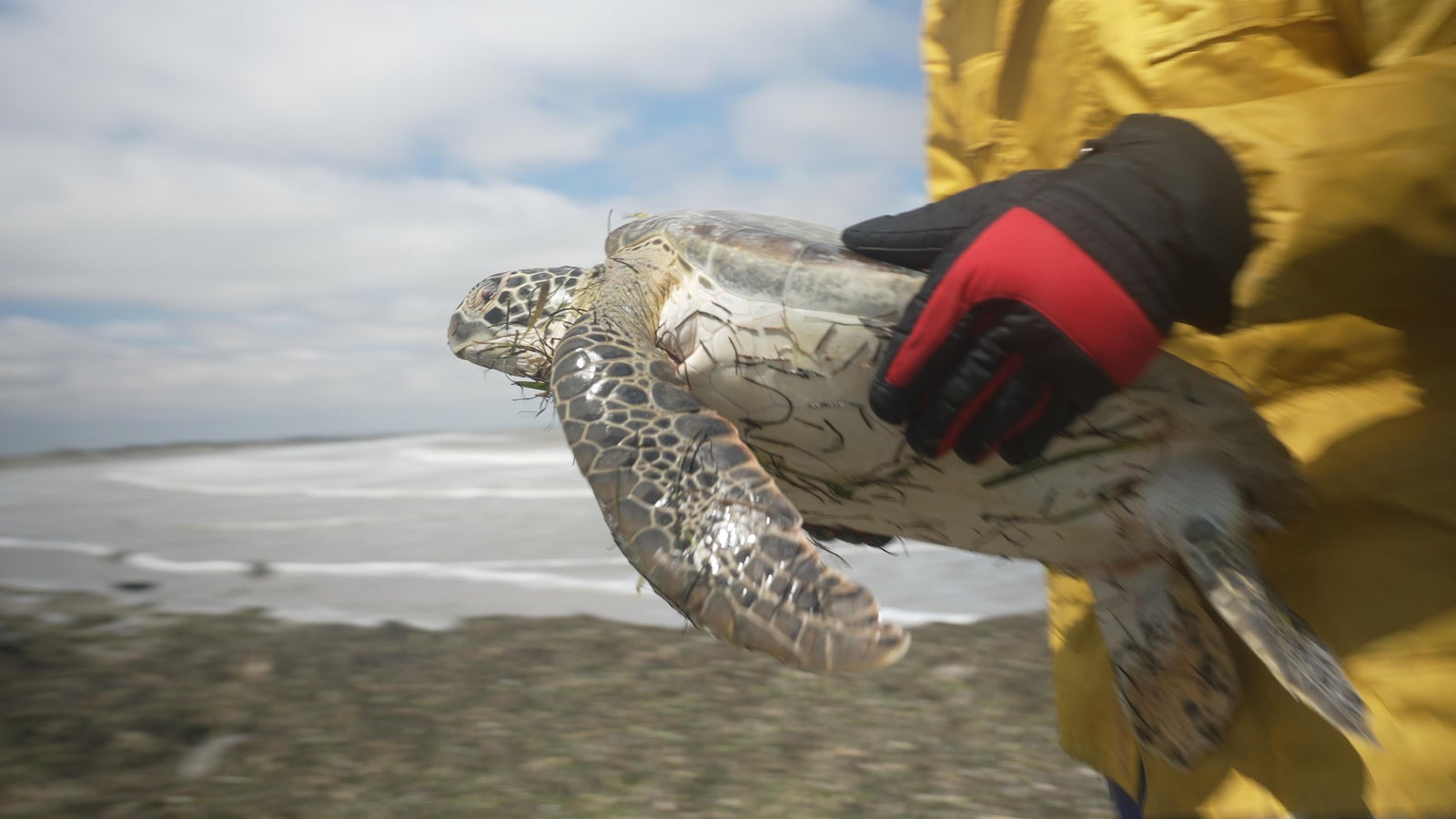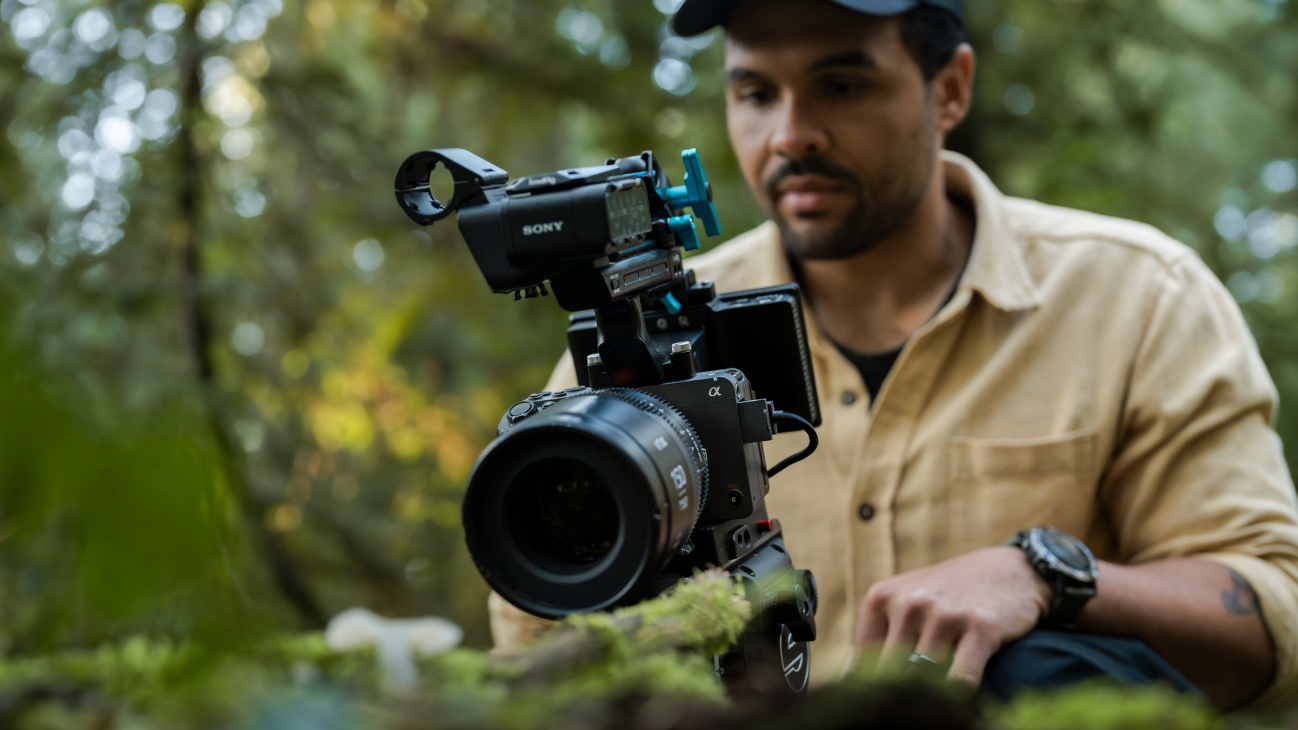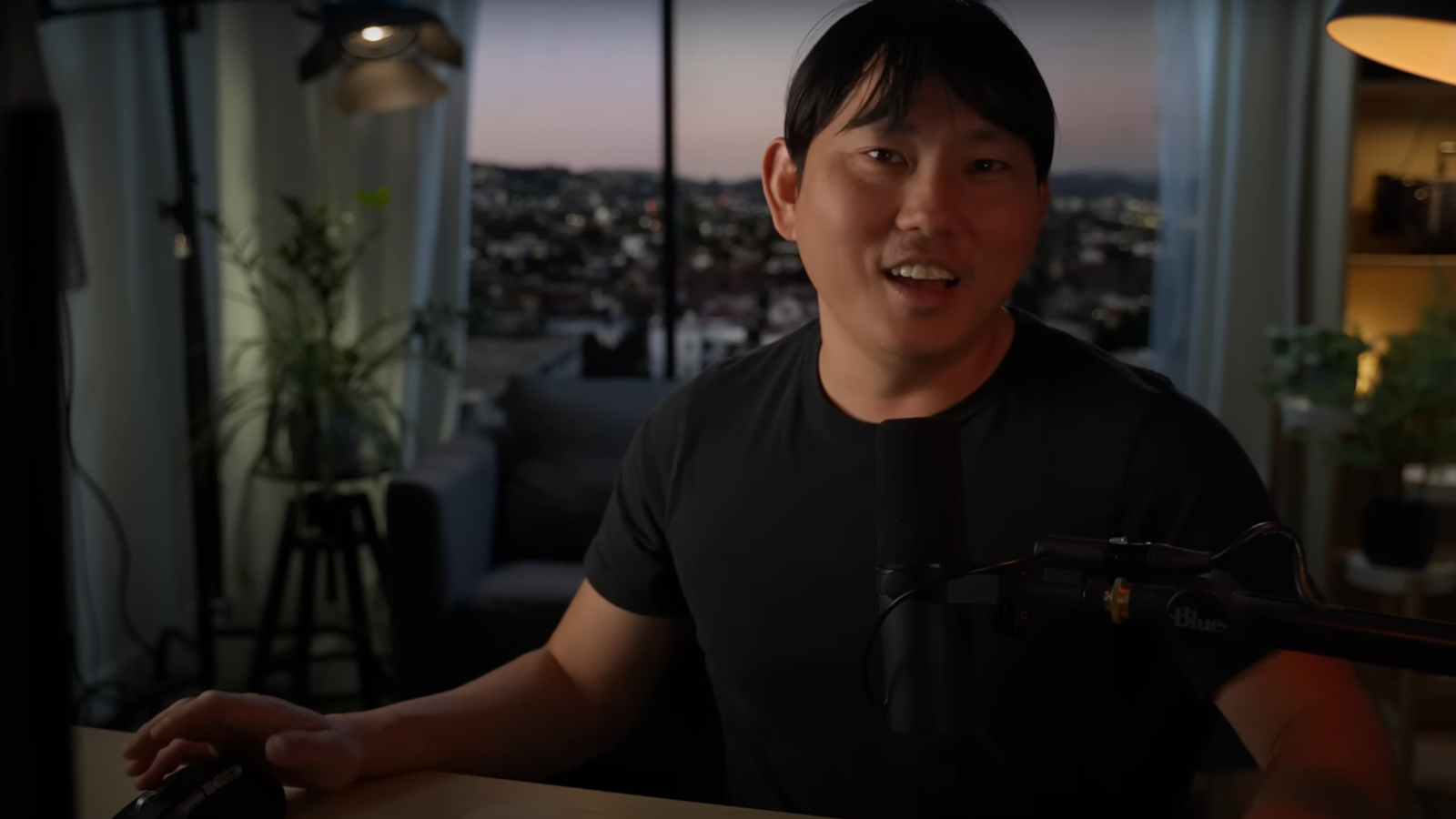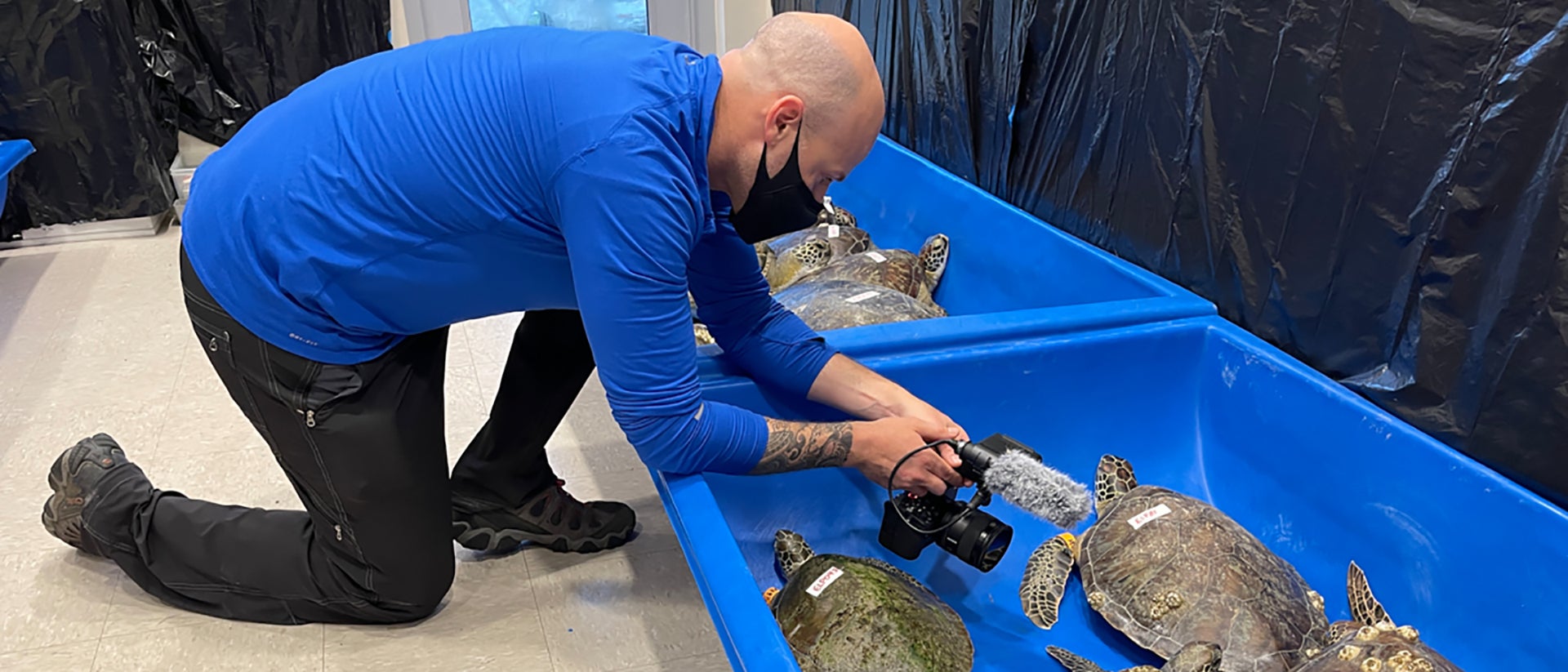
03-10-2021 - Case Study, Gear, Technology
Cold Stun – Documenting Turtle Conservation in Texas with the FX3
By:
“Cold Stun” was not the original story we had in mind when we were asked in early February to make a short film for the FX3 launch.
As new transplants to Texas still unpacking our moving boxes, we figured our idea for a short film called “Sunkissed” would be a good way to explore our new surroundings. But the now infamous winter storm changed all that. When the weather began to turn and the sun disappeared, we shifted to covering different animal sanctuaries in Texas - farm animals, butterflies, birds, and turtles. However, just as we were settling into our first interview with the director of Sea Turtle Inc, news of the potential cold stun situation made us again reassess our shoot.
Photo top of page, Sony Artisan Ben Lowy filming some rescued turtles
When we work in the field with a dynamic, moving story, we try to keep our gear to a minimum. It ends up being less helpful if we have every lens under the sun and ten different matte-boxes and filters. The whole point of the FX3 - at least for us - is that it’s a very modular cinema camera that can be held, fit, and mounted in a variety of ways.
Having only one FX3 meant having only one angle, and we knew that all the underwater work needed to come at the end due to the risk of water damage. Getting an underwater housing molded for any camera is hard enough - but especially for a confidential sample of a new camera with completely novel ergonomics, button placement and mounting points. We ended up using Outex - a company that makes high strength latex sleeves for cameras. It worked perfectly and Ben was able to get into the tanks with Sea Turtle Inc’s residents.
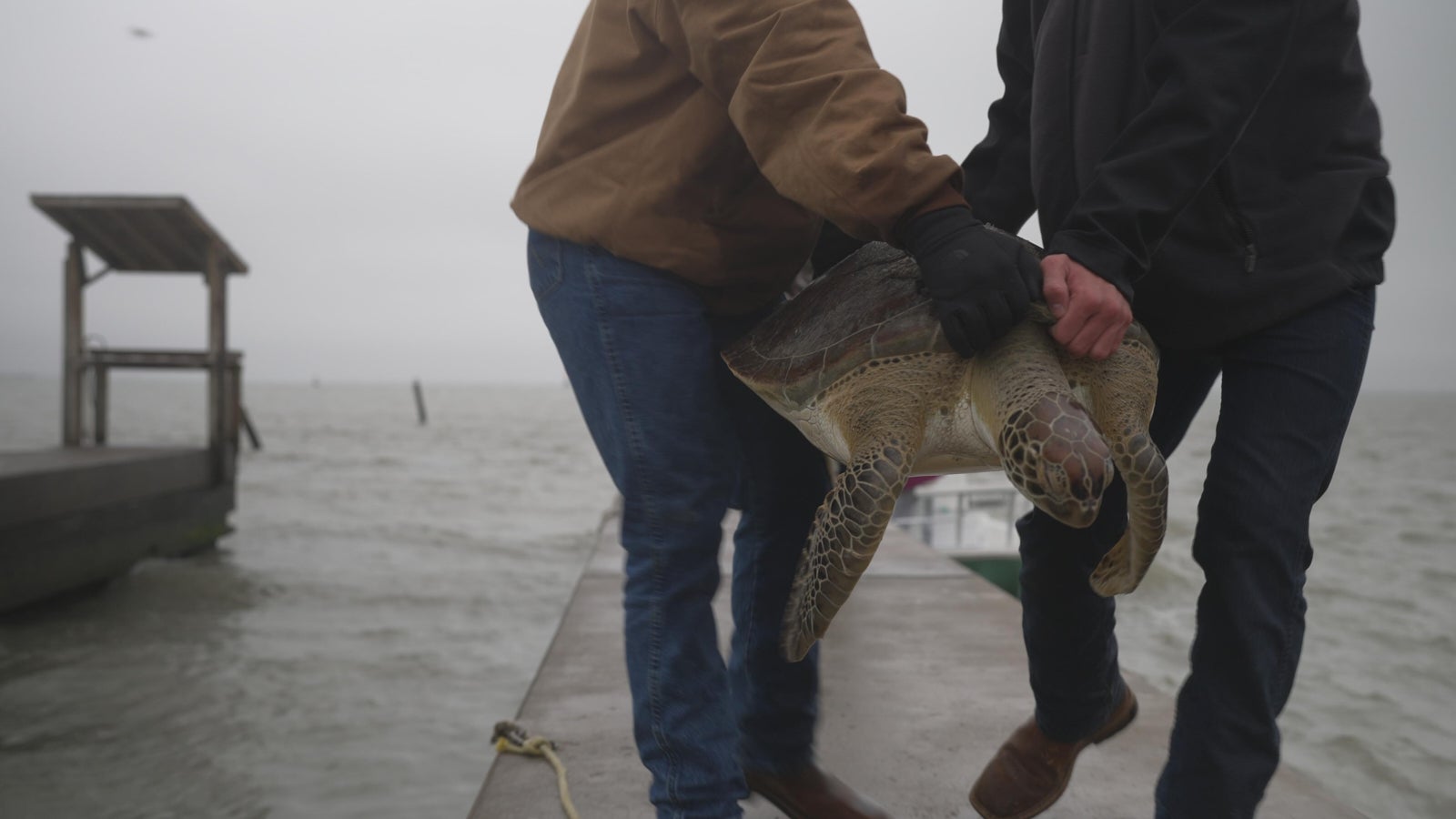
For lenses, we had the new 35mm F1.4 G Master, as well as the 20mm, the 90mm macro, and our most versatile lens: the 24-105mm F4. The storm shots were taken with the 70-200 zoom, with and without the 1.5 extender.
We used a brand new DJI RSC2 - which is perfect for the FX3, though a little unbalanced when using the handle/mic attachment. The wind was viciously blowing, so we didn’t end up using the onboard mic as much. At the end of the shoot, the gimbal was covered in turtle poop and sea water, but it was worth it.
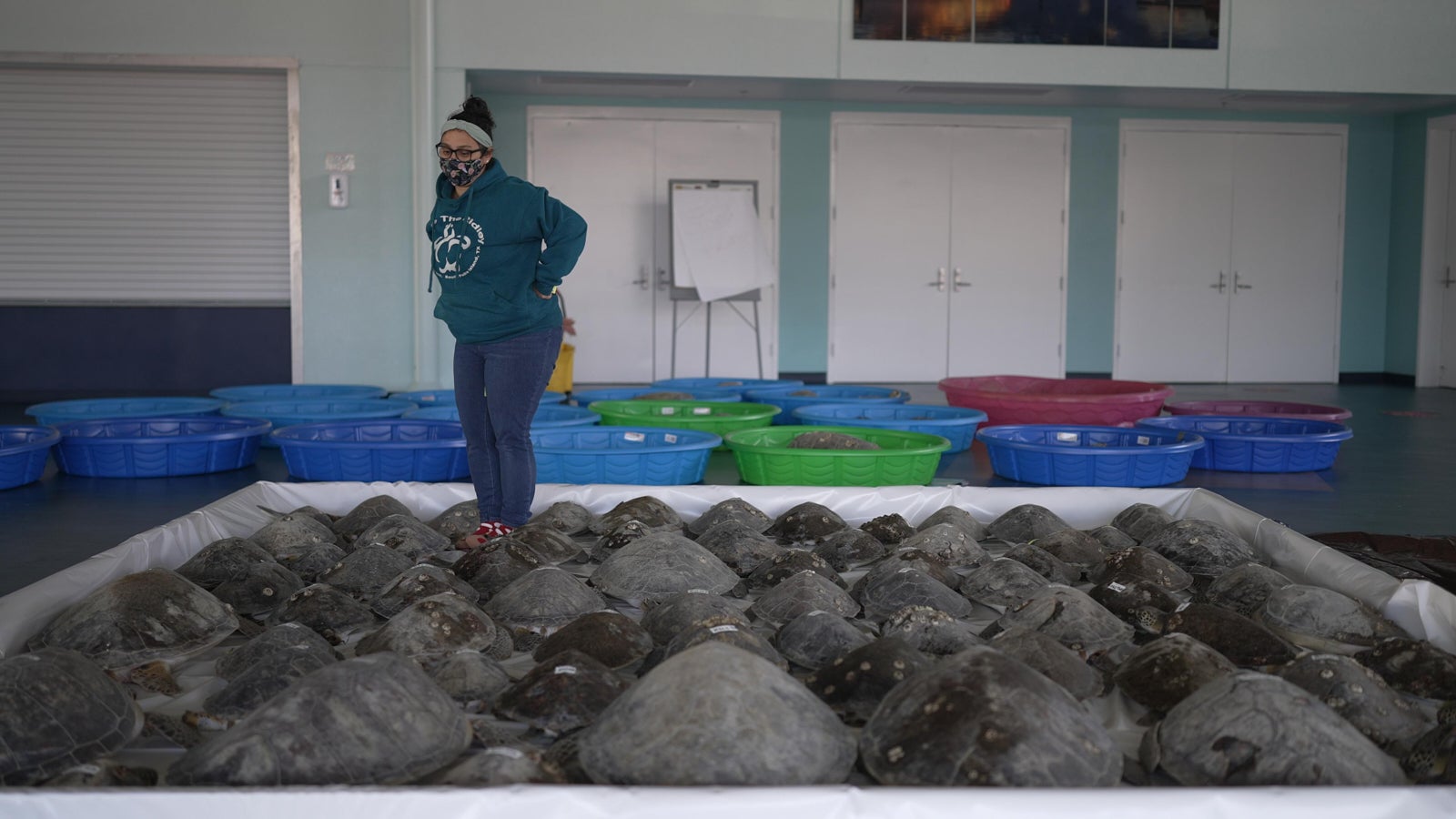
Those few days of extreme cold in Texas lowered the temperature in the South Padre Island bay so much that it caused the largest cold stun in recorded U.S. history. It was a privilege to witness the efforts of Sea Turtle Inc., and to tell the story of how this small organization, with the support of the entire community, was able to rescue thousands of sea turtles.
To learn more about how to help this organization and its marine residents, please go to this page: https://seaturtleinc.org

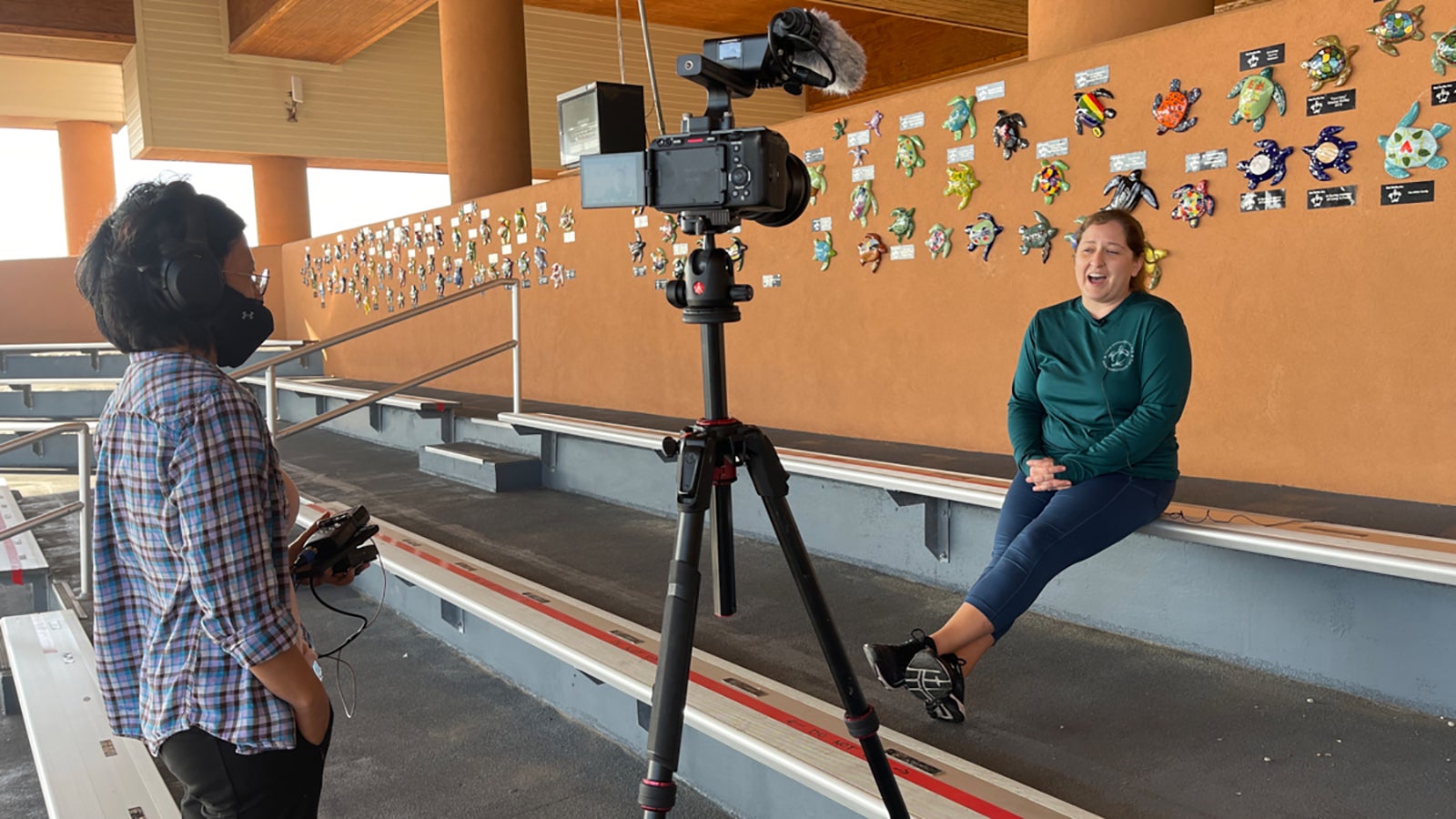
Sony Artisan Marvi Lacar conducting an interview
